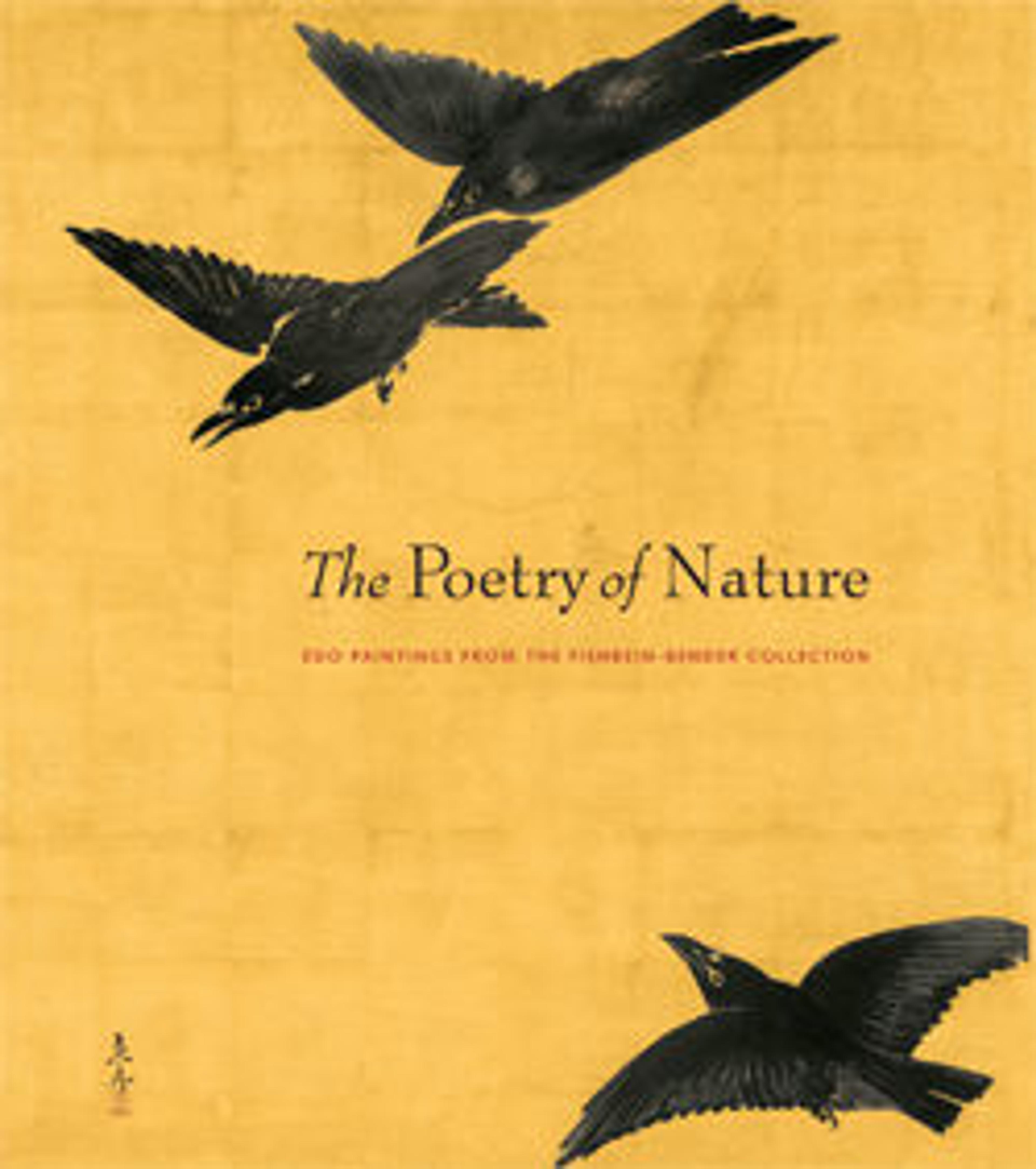The God of Good Fortune Jurōjin
Jurōjin, one of the seven Japanese gods of good fortune, is seated in a small boat with a white deer, his frequent companion. To compound the felicitous imagery, Jurōjin hoists a small minogame (straw-raincoat turtle) into the boat, and above him soars a crane, both symbols of longevity. The “mantle” of the turtle is formed from seaweed and attests to how long the amphibious animal has lived. Jurōjin’s forehead is traditionally depicted as overly large or elongated, emblematic of his wisdom. The accenting of his mouth and lips with bright red, a color associated with the budding of flowers in spring, adds to the celebratory effect of this work, no doubt made for the New Year.
The vigorous ink brushwork used to delineate the forms of the tree and stones, including Chinese “axe-cut” strokes, are characteristic of Soga Shōhaku’s work, though here might have been created with the assistance of members of his atelier. The rendering of the facial features and hands of Jurōjin, the representation of the deer, as well as the dynamic curved strokes of the waves, bespeak the brush of the master. The impression of the "Kiichi" seal is one known from other accepted Shōhaku works.
The vigorous ink brushwork used to delineate the forms of the tree and stones, including Chinese “axe-cut” strokes, are characteristic of Soga Shōhaku’s work, though here might have been created with the assistance of members of his atelier. The rendering of the facial features and hands of Jurōjin, the representation of the deer, as well as the dynamic curved strokes of the waves, bespeak the brush of the master. The impression of the "Kiichi" seal is one known from other accepted Shōhaku works.
Artwork Details
- 曽我蕭白筆 寿老人図
- Title:The God of Good Fortune Jurōjin
- Artist:Soga Shōhaku (Japanese, 1730–1781)
- Period:Edo period (1615–1868)
- Date:ca. 1773
- Culture:Japan
- Medium:Hanging scroll; ink and color on paper
- Dimensions:Image: 52 3/4 x 22 5/16 in. (134 x 56.7 cm)
Overall with mounting: 81 1/2 x 28 1/2 in. (207 x 72.4 cm)
Overall with knobs: 81 1/2 x 30 3/4 in. (207 x 78.1 cm) - Classification:Paintings
- Credit Line:Fishbein-Bender Collection, Gift of T. Richard Fishbein and Estelle P. Bender, 2011
- Object Number:2011.572.1
- Curatorial Department: Asian Art
More Artwork
Research Resources
The Met provides unparalleled resources for research and welcomes an international community of students and scholars. The Met's Open Access API is where creators and researchers can connect to the The Met collection. Open Access data and public domain images are available for unrestricted commercial and noncommercial use without permission or fee.
To request images under copyright and other restrictions, please use this Image Request form.
Feedback
We continue to research and examine historical and cultural context for objects in The Met collection. If you have comments or questions about this object record, please contact us using the form below. The Museum looks forward to receiving your comments.
